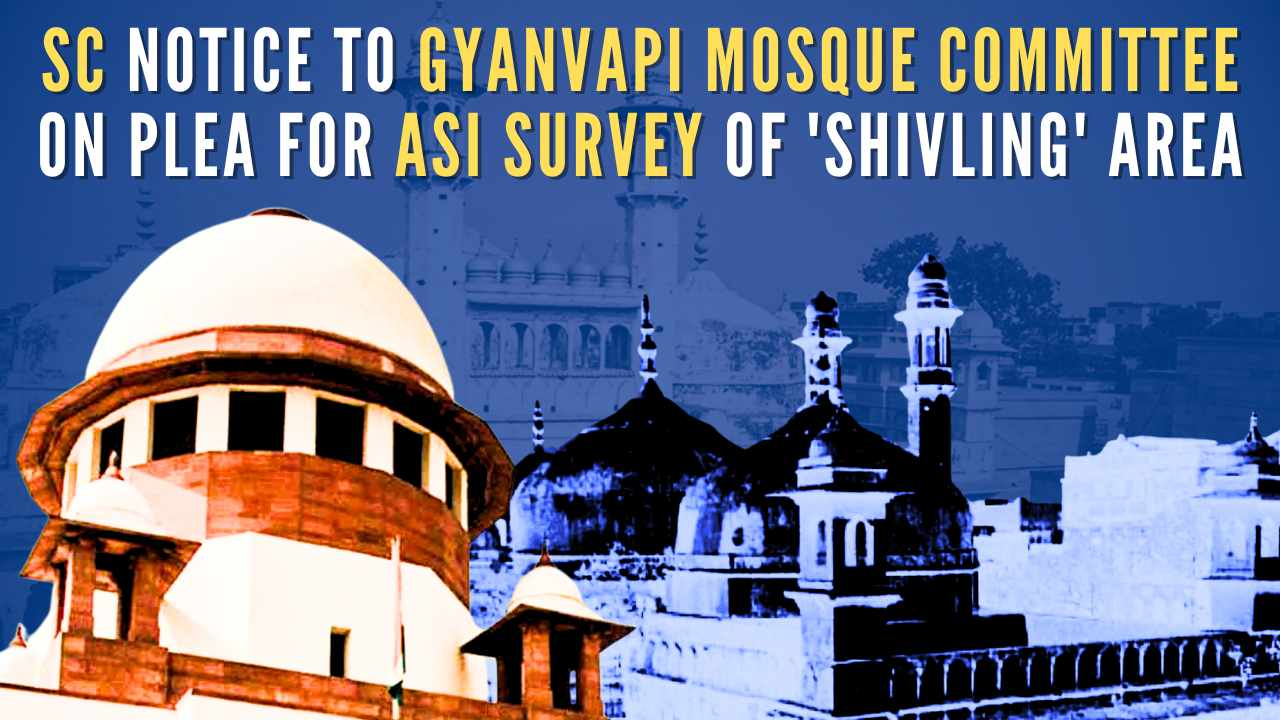SC Seeks Gyanvapi Masjid Response on ASI Survey
Why in the news?
The Supreme Court asked the Gyanvapi Masjid Committee to respond to the ASI’s plea for surveying a sealed area, crucial for evidence in the mosque-temple dispute.
Supreme Court’s Notice to Gyanvapi Masjid Committee:
- The Supreme Court issued a notice to the Gyanvapi Masjid Committee regarding the Archaeological Survey of India’s (ASI)
- The plea seeks permission to survey a sealed area within the Gyanvapi mosque premises.
- The Court has granted the Masjid Committee two weeks to file its response to the ASI’s request.
ASI’s Sealed Area Survey Proposal:
- The ASI’s proposed survey aims to gather evidence for the ongoing dispute over the mosque’s origins.
- Earlier surveys were conducted in other parts of the mosque premises, raising both legal and religious debates.
- The sealed area is believed to hold critical information regarding the historical nature of the site.
Background and Legal Developments:
- The Gyanvapi mosque dispute revolves around the claim that it was constructed over a pre-existing Hindu temple.
- The mosque committee has previously contested ASI surveys, citing concerns about religious sensitivity and legal overreach.
- The Court’s decision to hear the ASI’s plea could have significant implications for the resolution of this dispute.
About Archaeological Survey of India (ASI):
- ASI, under the Ministry of Culture, is India’s premier body for archaeological research and cultural heritage protection.
- It administers over 3,650 monuments, archaeological sites, and remains of national importance.
- Key activities include surveys of antiquities, excavation of sites, and conservation of protected
- Founded in 1861 by Alexander Cunningham, the first Director-General, who is known as the “Father of Indian Archaeology.”
- ASI plays a vital role in preserving India’s historical and cultural legacy.
Gyanvapi Mosque:
- Built in 1669 during Aurangzeb’s reign by demolishing the Vishweshwar temple.
- Name derived from the nearby Gyanvapi well, meaning “Well of Knowledge.”
- Temple’s plinth became the mosque courtyard; the qibla wall was part of the temple.
- Materials from the temple were reused in mosque construction.
- The Nandi statue faces the mosque wall, believed to align with the original Vishweshwar temple sanctum.
Kashi Vishwanath Temple:
- Referenced in the Kashi Khanda of Skanda Purana.
- Constructed in the 11th century by Hari Chandra and rebuilt in the 18th century by Rani Ahilyabai Holkar.
- Located on the Ganga’s western bank, it is a Jyotirlinga dedicated to Shiva as Vishvanatha.
- Gold domes were added in 1839 by Maharaja Ranjit Singh.
- Believed the original lingam was hidden in the Gyanvapi well during Aurangzeb’s raid.
Sources Referred:
PIB, The Hindu, Indian Express, Hindustan Times




